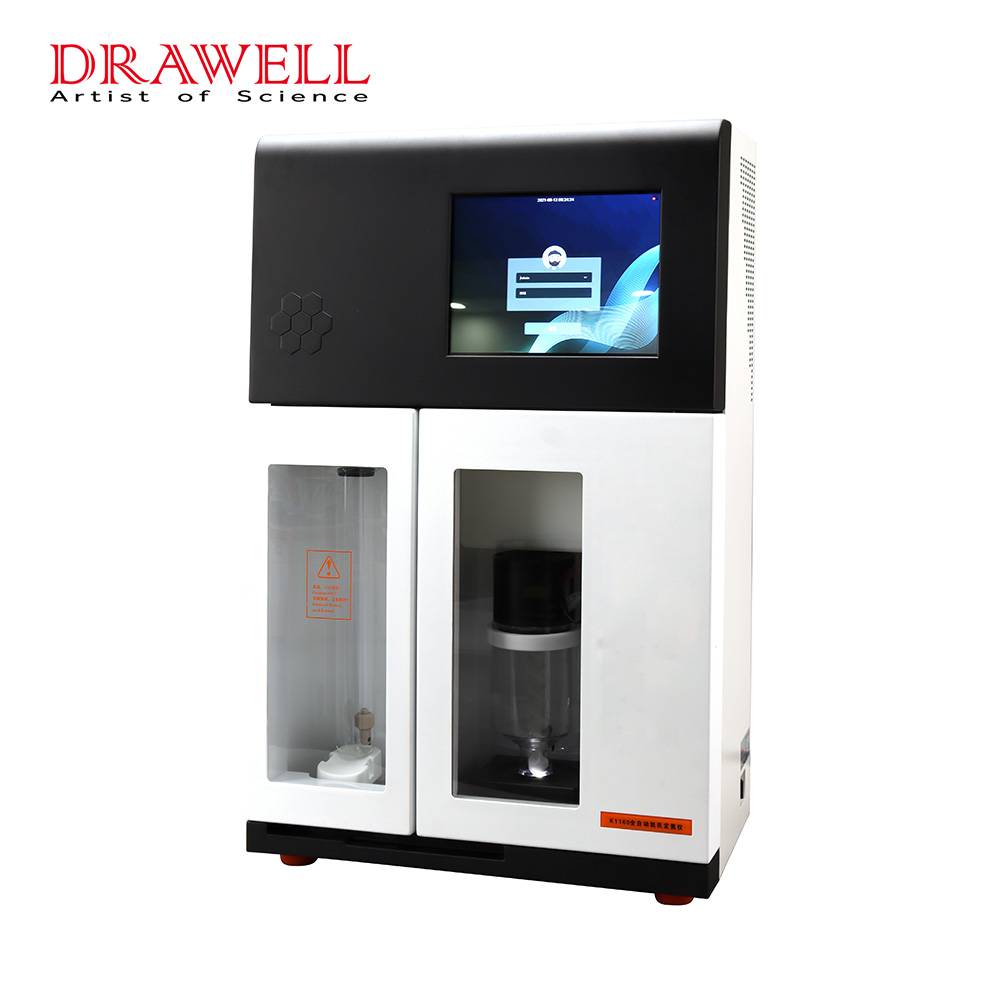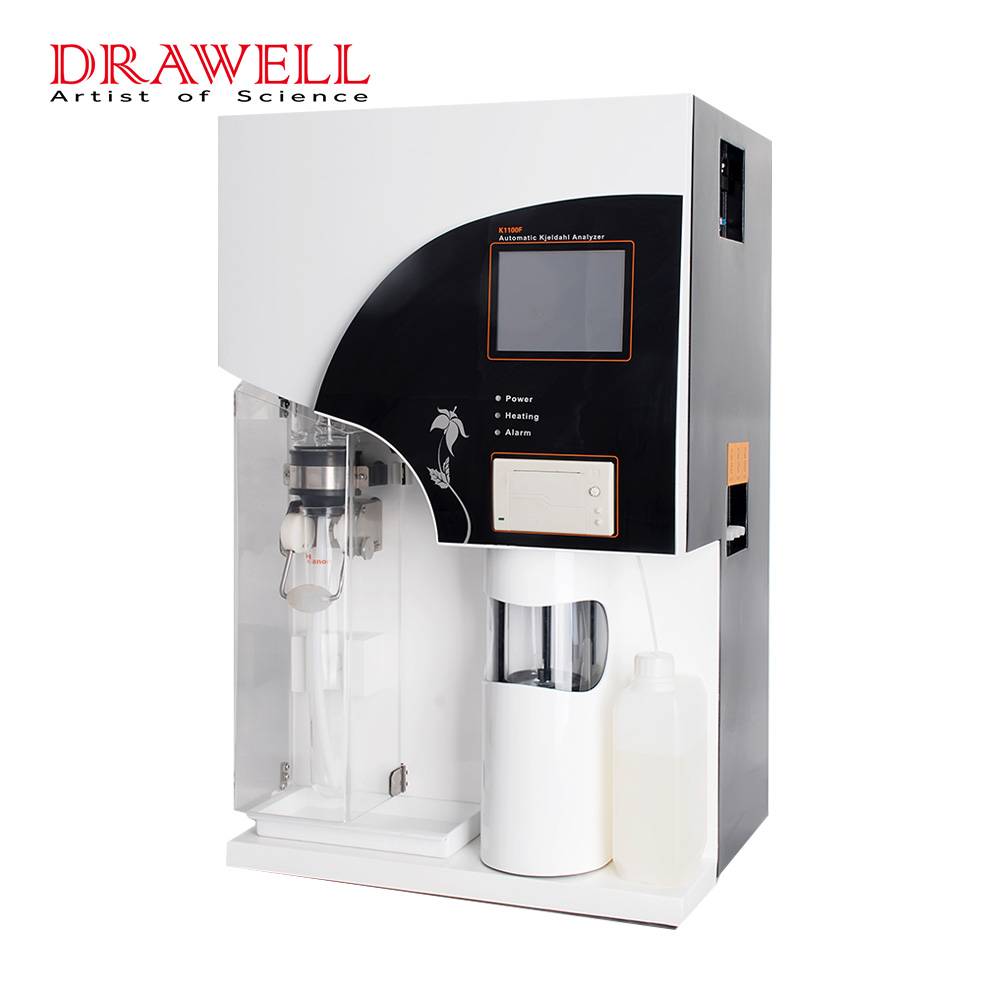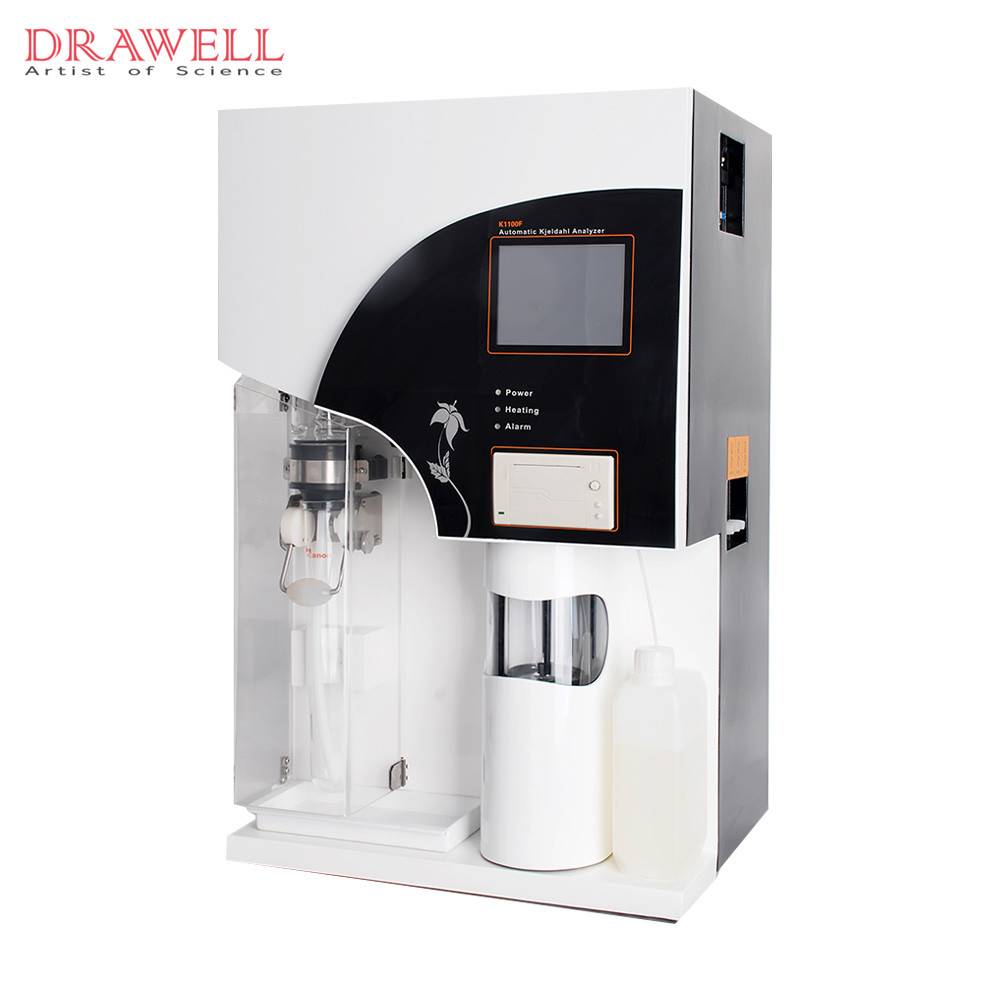Kjeldahl Nitrogen Analyzer is used more and more popularly in the world. To help you know it in detail, this article will introduce 4 basic knowledge about Kjeldahl Nitrogen Analyzer.
What Is Kjeldahl Nitrogen Analyzer?
The Azotometer is widely used in food factories, drinking water plants, drug inspection, and fertilizer determination. It is a specialized tool for identifying nitrogen levels in soil, feed, dairy, drinks, seeds, and other agricultural and ancillary products. The Azotometer is an instrument that calculates the protein content by measuring the nitrogen content in the sample based on the principle that the nitrogen content in the protein is constant. Because the method of measuring and calculating protein content is called the Kjeldahl method, it is called the Kjeldahl nitrogen analyzer, also known as protein analyzer and crude protein analyzer.
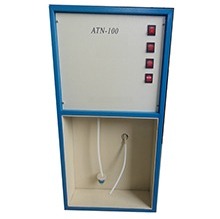
Working Principle of Kjeldahl Nitrogen Analyzer
The Kjeldahl Nitrogen Analyzer(commonly known as the nitrogen analyzer) is designed and manufactured based on the international Kjeldahl nitrogen method. A steady output over time for use by the distiller.
The lye under the control of the first executive organ flows through the distillation tube and enters the quantitative digestion tube so that the ammonia fixed in the acid solution is volatilized under alkaline conditions.
The steam controlled by the second executive organ distills the sample under alkaline conditions to thoroughly volatilize the ammonia. The volatilized ammonia is condensed by the condenser and completely fixed in boric acid, and then titrated with standard acid to the endpoint, the nitrogen content is calculated and then multiplied by the coefficient for converting protein to obtain the protein content.
Components of The Kjeldahl Nitrogen Analyzer
The manual or automatic Kjeldahl nitrogen analyzer consists of a distillation device, titration device, detection device, and waste discharge device.
How to Maintain the Kjeldahl Nitrogen Analyzer?
The daily maintenance of the instrument is the need to protect the Kjeldahl nitrogen analyzer and reduce the failure rate of the instrument, and the aging or overloading of the internal components will lead to inaccurate operation of the equipment. If some instruments and meters used in safety inspection have problems, the consequences can be imagined. You know, that doing daily maintenance can be very effective in reducing the incidence of these accidents.
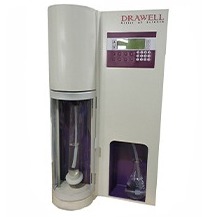
1. Because the Kjeldahl nitrogen analyzer needs to be heated and distilled when it is working, it needs good ventilation and heat dissipation conditions.
2. If there is liquid accumulated in the tank at the front of the Kjeldahl nitrogen analyzer, please wipe it clean in time.
3. Regular cleaning mainly includes four parts: Cleaning of the alkali road, Cleaning of the acid road, Cleaning of the distillation cup, and Cleaning of the steam bottle.
1) Cleaning of the alkaline circuit needs to be done at the end of every day.
- Replace the alkali bucket with a cleaning bucket filled with distilled water and tighten the lid tightly without pulling out any pipelines.
- Turn on the power switch, set it to add alkali 100ml, add acid 0ml, distill 0 minutes, press the “Start” switch, the countdown of the instrument ends, and the cleaning of the alkali path is completed.
2) Acid road cleaning needs to be done regularly
- Replace the acid bucket with a cleaning bucket filled with distilled water and tighten the lid tightly without pulling out any pipelines.
- Turn on the power switch and set the second for adding acid, 0 for adding alkali, and 0 for distillation, press the “Start” switch, the countdown of the instrument ends, and the cleaning of the acid circuit is completed.
3) Cleaning of the distillation cup. (Regularly clean the scale in the distillation cup according to the respective conditions, and observe the situation of the distillation cup from the observation window on the side).
- Open the clamp of distilled water residual liquid to drain the residual liquid and then tighten the clamp.
- Fill the cleaning bucket with 20% glacial acetic acid, then replace the distilled water bucket, cover the lid, and the pipeline does not need to be pulled out.
- Turn on the power switch set the alkali addition to 0, and acid addition to 0, and distill for 6 minutes, press the “Start” button to start cleaning. Repeat several times until it is cleaned and then turn off the power.
- Open the clamp of the distilled water residual liquid port, let the acid liquid drain, and clamp the clamp!
- Take down the cleaning bucket containing the acid solution, replace it with a distilled water bucket, close the lid tightly (no need to pull out any pipelines), and then press the “Start” switch, (set alkali addition 0, acid addition 0, distillation for 6 minutes) Distillation, after the distillation is over, turn off the power, open the clamp to release the residual liquid, then tighten the clamp, turn on the power switch, and repeat the distillation several times until the acid and dirt in the distillation cup are drained.
4) Steam bottle cleaning
- Inject 150ml of 20% glacial acetic acid into the digestive tube, place the digestive tube on the bracket, and close the safety door of the instrument. Turn on the power switch, set the distillation for 6 minutes, add alkali 0, add acid 0, press the “start” button, and wait until the end of the distillation, if the dirt is serious, you can repeat the distillation several times, after the steam bottle is clean, turn off the power, put the Pour off the glacial acetic acid.
- Pour 150ml of distilled water into the digestive tube, place the digestive tube on the bracket, and close the safety door of the instrument. Turn on the power switch, set the distillation for 6 minutes, add alkali 0, add acid 0, press the “start” button, and wait until the end of the distillation, if there are still impurities in the steam bottle, you can repeat the distillation several times until the acid liquid in the steam bottle and Impurities are cleaned, the power is turned off, and the residual liquid in the digestive tube is poured out.

